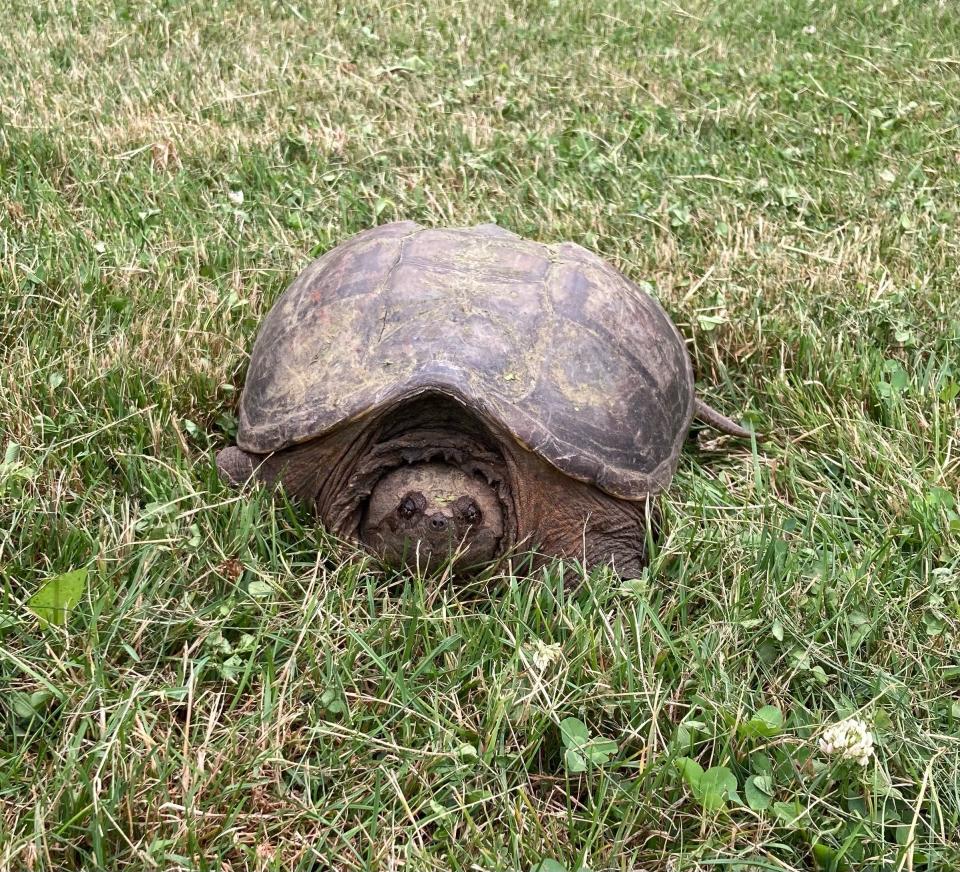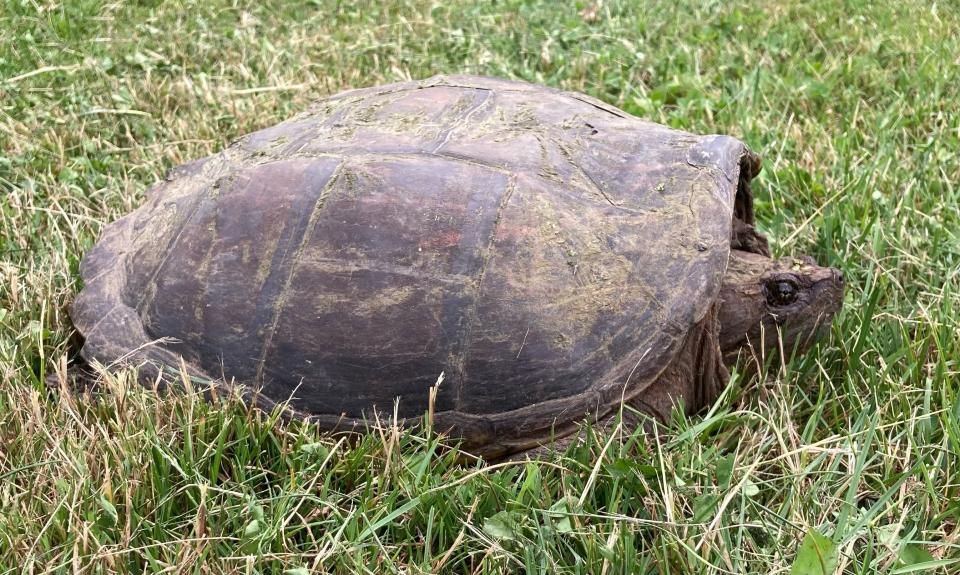Turtle 'tale:' Snapper on the move turns into educational opportunity
Living in the country, there’s no telling what things in nature you might wake up to. Baby fawns hiding in your flower beds, racoons and wood ducks in your chimney, skunks and groundhogs under your porch, snakes in your basement, and birds nesting on window ledges are all things that have happened at the Holden House.
I’m sure there are many more that have gone unnoticed, but it’s amazing what you might see if you stop and just take in what nature is doing around you.

That happened just this past week when my wife, Jean, noticed what she first thought was a groundhog in the side yard, but then realized that it was the pond’s resident snapping turtle out for a jaunt. Now, we know that you are never supposed to relocate turtles (any species) when you find them, and if you do help one across the road, make sure you send it off in the direction it was heading, but this one we just went out to say hello to and to “snap” a photo of her.
Only female snapping turtles leave the water
I know it was a “her,” because basically only female snapping turtles ever leave the water, and it got me interested in learning more about snapping turtles, so I did some digging.
For the most part, snapping turtles spend their entire life under water, and mostly out of sight. In the early summer you may see them basking in the sun just under the water's surface, but they don’t crawl up on logs to sun themselves like a lot of other turtle species. Because of the shape of their head, they come up occasionally for air, just sticking their nostrils out of the water.
The rest of their life is spent mostly dug into the muddy bottom of the lake, marsh or pond that they call home, in fact spending their entire winter dug in for a long nap as they won’t breathe again until they emerge in the spring.
Turtles are reptiles, so they lay eggs. Mating occurs in the water, but the eggs are buried on land, and in Ohio, that occurs in June. She takes off on a journey over dry land in search of a suitable place to lay her eggs, traveling as many as 10 miles. She’ll dig a hole with her back feet, and lay 20-40 eggs, or more depending on the size of the snapping turtle, then pack the sandy soil over her eggs with the flat portion of her underbody, technically known as her plastron. In fact, one way to tell a male snapping turtle from a female is that his plastron (bottom shell) is slightly curved, while the female’s is flat. Males also have a longer tail.

I’m guessing that the snapping turtle making its way through our side yard was on its way back from laying its eggs, as it moved surprisingly fast back to the pond, where we haven’t seen her since.
Like a lot of animals in nature, the survival rate of baby turtles, or hatchlings as they are called, is very low — with some reports saying it is as low as 1%. One reason is that snapping turtle nests are often preyed upon by racoons, skunks, fox and mink.
Snapping turtles reach maturity at age 15
After 80-90 days, the eggs hatch, and the hatchlings find their way to the water, where again they are prey for herons, gulls, otters and fish. If they make it to 2 years of age, they have a pretty good chance of surviving to 30, that is if they don’t get hit by a car crossing the road. Of course, that’s not a problem for the males, as they never leave the water. Snapping turtles reach maturity at the age of 15.
Unlike a lot of other turtles, snapping turtles can’t fully pull their arms and legs into their shell as their bodies are too large. That’s why Mother Nature gave them a long neck and powerful jaws to defend themselves, as well as to catch their food.

And speaking of food, while some may think that snapping turtles are detrimental to ponds, studies show that they feed heavily on sick and diseased fish, which is a good thing. Snapping turtles will also eat insects, frogs and birds. The negative effect on fish population in ponds is exaggerated, as is the myth that a snapping turtle can “snap” your finger off. Do damage, yes; snap your finger off, no.
In Ohio, it is legal to harvest snapping turtles with a valid fishing license, and their meat is considered a delicacy when the turtle is cleaned properly, tenderized and prepared with a good recipe.
But, if you’re just interested in helping a snapping turtle across the road, do not pick it up by its tail as that may damage bones in its back and tail. Instead, use a stick to push the turtle into an appropriately-sized box and move it in the direction it was headed. Then, give yourself a pat on the back, and understand that you got to witness something that very few people ever get to see — a snapping turtle on dry land.
Outdoor correspondent Art Holden can be reached at letsplabal@yahoo.com.
This article originally appeared on The Daily Record: Turtle 'tale:' Why did this snapper trek across the yard?

